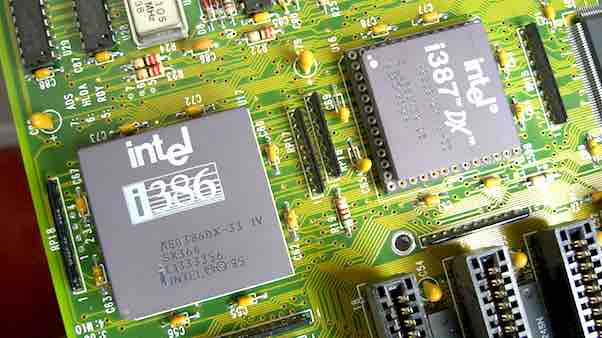
Intel Corporation’s organizational culture defines the company’s capabilities in the global market for semiconductors, microprocessors, and other technological products. The firm’s organizational culture indicates the values and traditions that influence employees and their decisions. Intel’s corporate culture is applied as a way of ensuring the company’s competencies despite competition and other challenges in the industry. For example, the company culture promotes human resource support for high-quality products, which help fulfill Intel’s mission statement and vision statement. The company’s cultural traits maintain capabilities for addressing rapid changes in the market. As an industry leader, Intel benefits from using its organizational culture for business resilience.
Intel’s organizational culture enables business capabilities for overcoming challenges in the global semiconductor market. This work culture is a critical factor that supports the business competencies shown in the SWOT analysis of Intel. Cultural traits also support the company’s effectiveness in developing competitive and profitable microprocessors and related products.
Characteristics of Intel’s Organizational Culture
Intel Corporation’s core values are the main defining factors of the company’s organizational culture. The company is known for its corporate culture of meritocracy, which considers employee ability and output. This culture differentiates Intel from competitors, maintains a high-end brand, and influences customers and suppliers to adopt technological efficiency in their mindsets. The following are the main characteristics of Intel’s organizational culture:
- Customer orientation
- Risk-taking
- Discipline
- Great place to work
- Quality
- Results orientation
Customer Orientation. Customers are a focal point that defines Intel’s organizational culture. This cultural characteristic is strengthened based on the principle that the company must effectively satisfy customers’ needs. For example, employees are trained to identify possible issues customers might experience with their semiconductors. This corporate cultural feature enables the company to determine concerns that must be included in the product development process. Through this characteristic of the organizational culture, Intel also enhances customer service to maintain partnerships with other technology companies and to address end-user concerns.
Risk-Taking. Intel Corporation includes risk-taking as a value that the organizational culture integrates into human resources. This cultural trait is all about taking the extra step to try new or novel things. For example, Intel’s workers are encouraged to bring up solutions for consideration by upper management. This characteristic of the corporate culture contributes to the company’s proactive ability to address issues in its semiconductor business. Thus, Intel’s work culture supports proactive problem-solving.
Discipline. This cultural characteristic puts emphasis on rules and norms. Intel has a system of rules on employee behavior and how to conduct business. This trait of the organizational culture addresses the need to maintain effective business processes and to streamline the organization according to general strategies and Intel’s operations management policies. For example, discipline in workers’ activities minimizes deviations of output quality relative to the company’s standards. In this way, the organizational culture helps Intel maintain business efficiency.
Great Place to Work. Intel Corporation uses its business culture as a tool for optimizing employee motivation and morale. Motivation and morale minimize employee turnover and associated costs. This characteristic of the company culture is applied in cooperation with the employees for their own benefit. For example, Intel has HR programs that foster camaraderie and rapport among employees. The company benefits from its organizational culture in terms of a motivated workforce that satisfies the goals of the semiconductor business. The design of Intel’s organizational structure (business structure) influences social interactions and how this company culture maintains a great workplace.
Quality. Quality is a major selling point aligned with Intel’s generic competitive strategy and intensive growth strategies. The company makes sure that its organizational culture embodies quality principles and ideals. For example, human resource training programs highlight output quality as a measure of employee excellence. This trait of the corporate culture supports efforts to differentiate Intel’s microprocessors from competitors, like AMD, IBM, and Samsung.
Results Orientation. This trait of Intel’s work culture aligns with the principles of meritocracy. For example, the company considers output and achievements as criteria in determining employees’ merits in performance appraisals and promotions. Intel integrates results orientation in its organizational culture through HR programs that recognize satisfactory output. The behavioral impacts of such programs become part of the company culture.
Advantages & Disadvantages of Intel’s Culture
Intel’s organizational culture has the advantage of its support for business improvement through risk-taking and ensures business resilience in the face of global competition. This factor helps the company develop new or novel semiconductor products. Another advantage of this corporate culture is that it contributes to Intel’s competitive advantages. For example, as one of the cultural characteristics, quality ensures attractive products that maintain the technology company’s market share.
A disadvantage of Intel’s organizational culture is its limited support for rapid innovation. Even though risk-taking encourages employees to take risky steps that benefit the company, this cultural trait does not push all employees to contribute to the innovation process. A recommendation is to improve this business culture through additional emphasis on innovative thinking, which is critically important in addressing challenges associated with the dynamics of global markets for microprocessors, mobile devices, and related technologies.
References
- Intel Code of Conduct.
- Intel Global Diversity and Inclusion.
- Kissi, P. S. (2024). Big data analytic capability and collaborative business culture on business innovation: The role of mediation and moderation effects. Discover Analytics, 2(1), 2.
- Life at Intel.
- Tadesse Bogale, A., & Debela, K. L. (2024). Organizational culture: A systematic review. Cogent Business & Management, 11(1), 2340129.